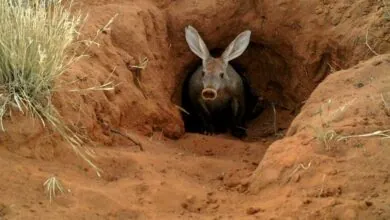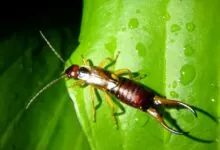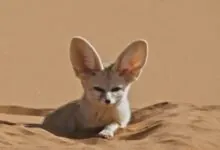Cheetah: Animal Kingdom’s Ultimate Speedster
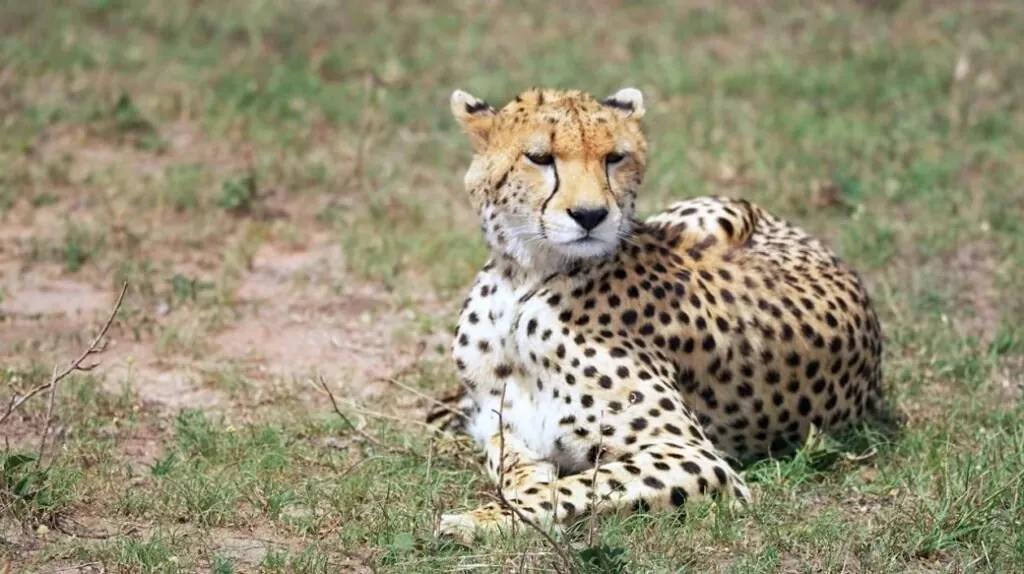
The first time ever I happened to see a cheetah, it was a sheer blur on the savannah so quickly that its graceful silhouette was briefly distinguishable against the golden backdrop before it vanished, almost like an illusion. Experts most often than not laud cheetahs as the perfect sprinters of nature – the evolutionary marvels capable of clocking speeds around 60 to 70 miles per hour (97 to 113 km/h) in mere seconds.
Today, with merely about 7,100 cheetahs remaining in the wild, we are reminded of their susceptibility, contrasted against their speed and raw power. Without further ado, delve with me into the striking world of cheetahs – a masterpiece in nature’s prowess.
| Kingdom | Phylum | Class | Order | Family | Genus | Scientific Name | Species |
| Animalia | Chordata | Mammalia | Carnivora | Felidae | Acinonyx | Acinonyx jubatus | 5 |
Origin and Evolution
Cheetah, Acinonyx jubatus, is the sole surviving member of the genus Acinonyx and is renowned for its unparalleled speed in a few seconds, making it the fastest land mammal. When it comes to cheetah’s origin, Miocene epoch is where we can trace the roots of its lineage – about 20 million years back in time, when its ancestors first surfaced.
Miocene Epoch
North America is where the earliest ancestors of modern cheetahs, identical to small-to-medium-sized cats, evolved in. One of these early forms was Acinonyx pardinensis – a prehistoric cheetah that was comparatively larger than the contemporary cheetahs.
Migration to Old World
These ancestors, as years went by, migrated to the Old World, including Africa, Asia and Europe, through the Bering Strait land bridge; this’s where the majority of cheetah’s evolution took place.
Pliocene Epoch (5-2.5 million years ago)
In the course of this span, multiple species belonging to the Acinonyx genus lived in Africa, Asia and Europe. Fossil records obtained from this era show a plethora of cheetah-like cats with different sizes and characteristics.
Genetic Bottleneck
Genetic bottleneck, a significant event in the cheetah’s evolutionary history, occurred approximately 10,000 – 12,000 years back in time. This event is when the genetic diversity of cheetah’s population dramatically reduced. The precise reasons behind the bottleneck aren’t completely comprehended, but human interference, climate change and the resulting variations in prey accessibility are the potential causes.
Distribution
There was a time when this flash of the world was widespread across multiple continents; it’s experienced a noteworthy reduction in its range thanks to different anthropogenic factors. Let’s spotlight an overview of cheetah’s distribution.
Africa
The lion’s share of the world’s remaining cheetah’s population is located in Africa. The majority of populations reside in East Africa, specifically in countries like Kenya and Tanzania. In regions of southern Africa, particularly Botswana, Namibia and South Africa are where smaller, fragmented populations can be found.
Asia
The Asian cheetah, renowned as the Iranian cheetah, with solely a few individuals remaining in the wild, is critically endangered. Cheetahs, historically located across the Arabian Peninsula and as far east as India, has now been extirpated from almost all of its Asian range.
Geography
| Continents | Africa, Asia (historically, now almost extinct outside of Africa) |
| Subcontinents | Southern Africa, East Africa, Historically in parts of South Asia |
| Countries | Namibia (largest population), Botswana, South Africa, Kenya, Tanzania, Zambia, Zimbabwe, Mozambique, Uganda, Iran |
| Bio-geographical Realms | Afrotropical (Africa), Palearctic (Asia) |
| Biome | Grasslands, Savannas, Scrub forests |
| Climate Zones | Tropical, Subtropical |
Population
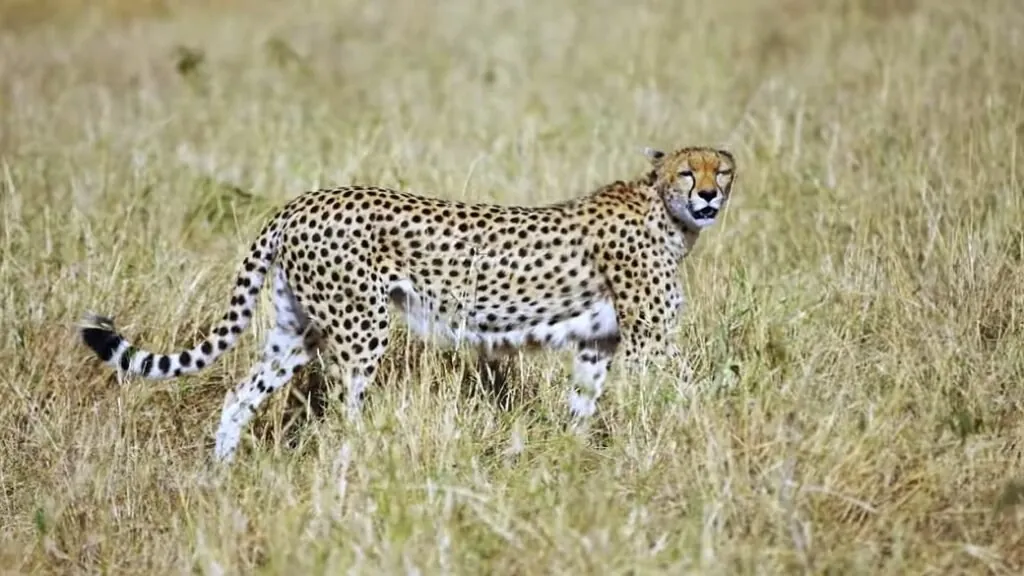
Over the last century, cheetahs, renowned for its striking grace and speed, has undergone a dramatic decline in numbers. These majestic animals that used to roam stretched expanses of Africa and parts of Asia, have now become a symbol of the urgent need for wildlife conservation. Let’s shed some light on cheetah’s population from different aspects.
Population Decline
Historically, cheetahs populated over 25 African countries and parts of Asia, from India to Iran. Contemporarily, their habitat is dramatically declined. At the beginning of the 20th century, there were estimated 100,000 individuals; the global cheetah’s population dropped to just around 7,100 by the start of the 21st century.
Current Estimates
As per the most recent figures, there are approximately 6,700 cheetahs left in the wild. The majority are located in Southern and East Africa, with Namibia hosting the predominant population.
Asiatic Cheetah
This species, native to Iran, is particularly in an alarming situation. It’s on the verge of extinction and critically endangered with fewer than 50 individuals thought to be remaining.
Habitat
Cheetahs, the iconic felines, thrive in habitats that align with its specialized hunting techniques and adaptations. Let’s spotlight their preferred habitats.
Grasslands and Savannas
Savanna – a mixed woodland-grassland ecosystem attributed by an open landscape with dispersed trees – is the primary habitat of this species. While chasing prey, cheetahs need to reach their top speeds, the vastness of savannas provide them this opportunity.
Semi-desert and Arid Areas
You can find cheetahs in semi-desert areas where there’re vast stretches of land abundant in minimal vegetation. In hot surroundings, it’s their lean bodies and adaptations for dissipating heat that serve them well. Spotting and chasing down prey become easier for them thanks to the fewer obstructions and the visibility rendered by these areas.
Mountainous Terrains
Though less in number, these species also located in mountainous regions, such as the Atlas Mountains in Morocco. In these terrains, they make use of their powerful vision to pinpoint prey from vantage points. Cheetahs, renowned for their unparalleled speed on land, and the majestic bald eagle, symbolizing grace in the skies, embody nature’s exquisite balance of swiftness.
Appearance
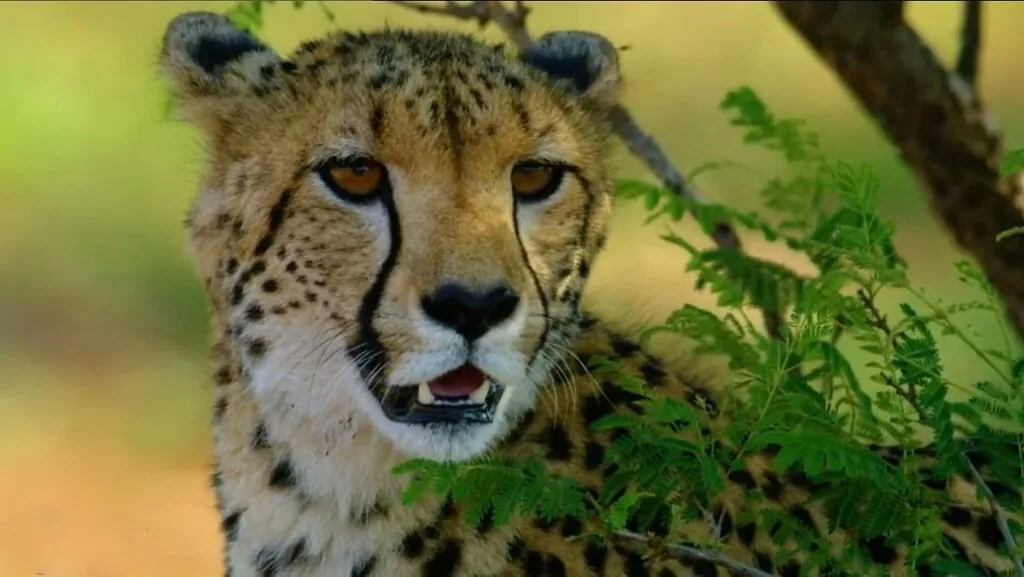
With regard to cheetah’s appearance, scientifically known as Acinonyx jubatus, it’s the speed that makes it one of the fastest animals in the world. Let’s shed some light on the distinct aspects of its appearance.
Body Build
This species is equipped with a slender and aerodynamic build that minimizes air resistance while running at high speeds. They in most instances weigh between 50-65 kg (110-143 lbs) for males and 35-60 kg (77-132 lbs) for females.
Coat and Markings
Cheetah’s coat – tawny to golden-yellow in color – is flecked with round black spots. These spots assist this creature to blend into its grassland habitat and stalk prey, serving as camouflage.
Head
With high-set eyes, their heads are small. When it comes to the most distinctive feature of cheetahs, the “tear marks” – two black lines that run from the inner corners of their eyes down to the sides of their mouth are what appeal the most to its spectators. These marks not only enhance the beauty of this animal but help deflect sunlight and focus better on prey also.
Legs
Cheetahs utilize their long, slender legs well-appointed for swift acceleration. At variance with other big cats, their claws are semi-retractable, which offer added grip on the ground during a sprint.
Tail
The tail, with a flat shape towards the end, is long and muscular. It plays its role as a rudder, assisting cheetahs to make sharp turns and mountain balance while shadowing prey at high speeds.
Anatomy
| Tongue | Rough for grooming and stripping flesh |
| Claws | Semi-retractable for better grip during sprints |
| Mouth | Wide for maximum oxygen intake during runs |
| Jaw | Less powerful, aims for prey’s throat to suffocate |
| Teeth | Long canines for gripping, smaller molars and premolars |
| Nose | Large and broad for increased oxygen intake |
| Legs | Long and slender for speed |
| Skeleton | Lightweight and flexible, especially the spine, for extended stride |
Reproduction and Life Cycles
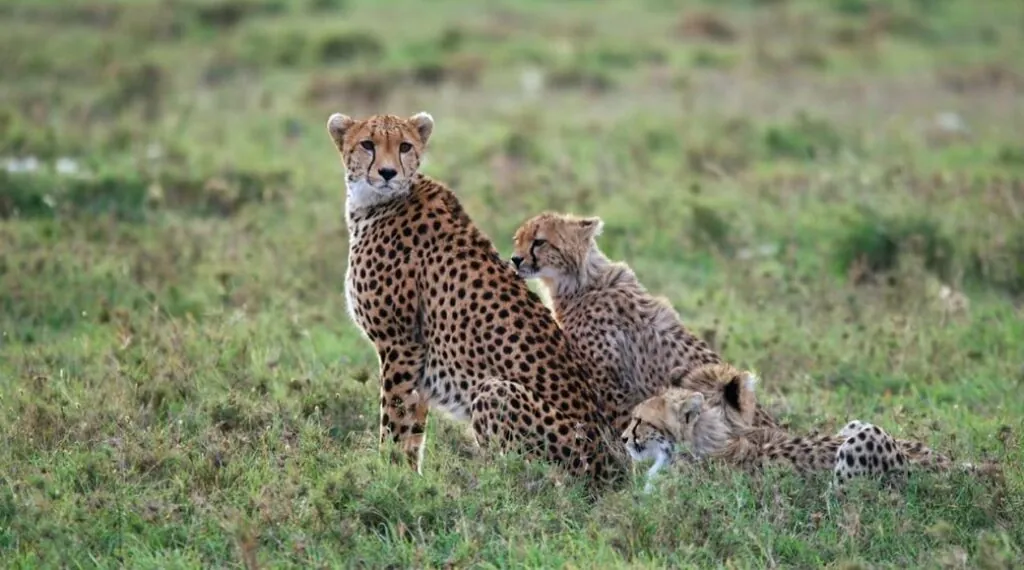
Among big cats, cheetahs have an unparalleled reproductive and life cycle. Let’s unfold the most noticeable aspects.
Mating and Gestation
Female cheetahs having an estrus cycle lasting about 12 days can mate any time of the year. Once the pair mates, the gestation period is approximately 90 to 95 days.
Birth and Early Life
Female cheetahs give birth to a litter of habitually 3 to 5 cubs, albeit it can range from 1 to 8. The cubs when born are vulnerable and blind weighing only about 150 to 300 grams.
Development
The cubs open their eyes approximately 5 to 10 days after birth. Reaching the 6 weeks of age, they begin following the mother and learning hunting tactics. “Mantle” – a long, grayish-blue fur on their back – is a unique feature in young cheetahs; it offers camouflage and may resemble honey badgers.
Independence
To be independent is one of the most striking levels of cheetah’s lifecycle. Young cheetahs, reaching the age of 18 month, start hunting of its own accord. For a few more months, they most often than not remain with their siblings in a group called a “sibling unit.”
Adulthood
To better defend territories, male cheetahs may build coalitions, typically with their brothers from the same litter. Females, on the flip side, are expansive and solitary, covering vast territories unless caring for cubs.
Lifespan
In the wild, cheetah’s lifespan can stretch up to 10 to 12 years. Adversities like human-wildlife conflict, habitat loss and predation on cubs by other large carnivores impact their endurance.
Mating Habits
| Mating Behavior | No fixed rituals; females initiate with receptive males |
| Reproduction Season | Year-round; peaks during rainy seasons |
| Gestation Period | Approximately 90-95 days |
| Independent Age | Around 18-24 months |
Lifestyle
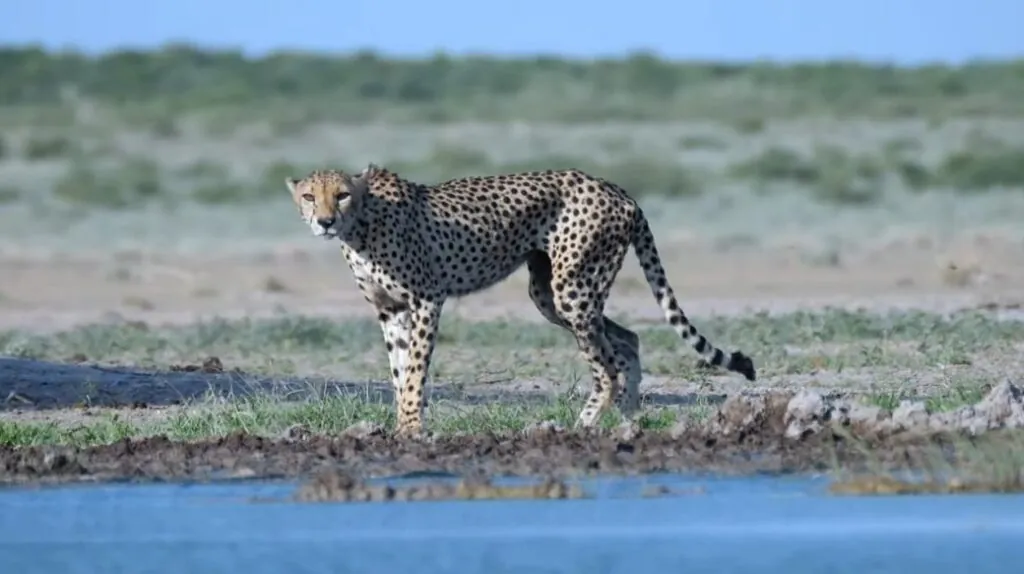
Cheetahs showcase unparalleled lifestyles that give them a distinctive edge in the animal kingdom. Let’s explore!
Habitat and Range
These animals chiefly reside in savannas, grasslands and open areas of Africa, with a smaller population in Iran. These stretched and open landscapes foster their hunting style which is based on speed.
Diet and Hunting
Cheetahs, being carnivorous, prefer smaller ungulates such as gazelles and impalas. Contrary to other big cats, that ambush, these creatures make use of their extraordinary speed, most often than not reaching up to 70 mph, in short bursts to chase down their prey. Nonetheless, this high speed is energy-intensive and can only last for short distance.
Activity Patterns
These species are diurnal, that is, they’re active during the day, particularly over the span of dawn and dusk. This activity pattern diminishes direct competition with the rest of grander predators such as lions that are more active at night.
Social Behavior
Female cheetahs, being solitary, only group when they’ve cubs. Males, on the flip side, often create small groups, dubbed as coalitions. These coalitions, typically made up of brothers belonging to the same litter, serve to secure territories and fend off other males.
Communication & Territory
Cheetahs communicate making use of a plethora of vocalizations, encompassing purrs, hisses and chirps. Using their scent glands positioned between their toes and urine markings, they mark their territories. Female cheetahs possess larger home ranges which they traverse without a fixed territory; males, by contrast, have defined territories.
Prey and Diet
Cheetahs, the dedicated carnivores, chiefly mark small to medium-sized ungulates. Their cherished prey encompasses gazelles, specifically the Thomson’s gazelle and impalas. Notwithstanding, based on the region and availability, they can feed on birds, hares and other smaller mammals as well.
Contrary to other big cats, cheetahs’ hunting strategy is unparalleled, that is, they don’t stalk and ambush; they rely on their unique speed in short bursts to shadow their prey. This attribute, though effective, is energy-intensive, leading cheetahs to eat rapidly to avoid their kills.
Threats
Habitat Loss
When it comes to the most significant threats to cheetah’s population, habitat loss appears first; this is due to agriculture, urbanization and human-driven activities.
Human-wildlife Conflict
Cheetahs once in a blue moon prey on livestock as their territories increasingly overlap with human settlements and farming areas.
Poaching
Illegal hunting also pose a threat for the population of cheetahs; this illegal hunting is a threat for both, their distinctive pelts and the exotic pet trade, particularly for cubs.
Genetic Vulnerability
Owing to a bottleneck event in their evolutionary history, these species have low genetic breadth of difference. The absence of diversity can escalate susceptibility to diseases and diminish reproductive success.
Conservation Status
As per the IUCN Red List of Threatened Species categorized cheetahs as “Vulnerable.” As of 2022, cheetah’s populations are on a decline, with only an approximated 7,100 remaining in the wild. The glass is half full! Organizations, such as African Wildlife Foundation (AWF) have played crucial roles in building protected regions where safe habitats for these animals can be ensured. Furthermore, the Cheetah Conservation Fund (CCF) coordinate with communities, offering awareness to decline conflicts.
Relationship with Humans
Historically, we’ve got a multifaceted relationship of cheetahs with humans. These animals were revered and even domesticated as hunting companions for royalty in ancient civilizations. Egyptian iconography and art manifest cheetahs on leashes, signifying prestige and power. Contemporarily, the dynamic has shifted. Cheetahs’ natural habitats have declined due to the expanding human settlements and agriculture, leading to conflicts when they prey on livestock.
Cheetah Fun Facts
| Common Name | Cheetah |
| Number of Species | 1 (though there are 5 subspecies) |
| Population Size | Estimated to be around 7,100 individuals as of my last training cut-off in 2022 |
| Lifespan | 10 to 12 years in the wild; can be up to 15-20 years in captivity |
| Weight | Males: 40-65 kg (88-143 lbs); Females: 35-60 kg (77-132 lbs) |
| Length | Total body length of 112-150 cm (44-59 in), with a tail length of 60-80 cm (24-31 in) |
| Top Speed | 58-70 mph (93-112 km/h) in short bursts covering distances up to 1,500 ft (460 m) |
| Predators | Cubs: lions, hyenas, leopards, eagles |
| Prey | Gazelles, impalas, small hoofed animals, birds |
| Most Distinctive Feature | Black “tear marks” from eyes to mouth sides |


